24 Wild Animals in Mali [Wildlife in Mali]
Want to know more about the wildlife in Mali?
Discover 24 wild animals in Mali in this post, as well as interesting facts about them. 🇲🇱
Learn All About Malian Animals
Ready to learn all about Malian animals?
I’ve always been fascinated by animals, and by how they can be so different from one country to another. In this guide, we’ll focus on the many animals Mali has on the land, in the sky, and underwater.
I’ve split the guide into 6 categories:
- Native animals from Mali
- Endangered animals of Mali
- What is Mali national animal?
- How many animals native to Mali?
- Are there Cheetahs in Mali?
- Are lions in Mali?
Let’s dive in right away with our first category!
Native Animals from Mali
Mali is a large, landlocked African country located in the western part of the continent, partly in the Sahara. It is the eighth-largest country in Africa, two-thirds of its population is under the age of 25, and it used to be a French colony. It is bordered by Algeria, Niger, Ivory Coast, Burkina Faso, Senegal, Mauritania, and Guinea, and its capital and largest city is Bamako, which counts more than 2,713,000 inhabitants (but more than 2,757,000 if you include the metropolitan area).
An interesting part of the country that I wanted to tackle is its wildlife. In light of that, I have listed the best of it, and I hope you will love learning what animals live in Mali.
Here’s the Mali animals list.
1. African wild dog
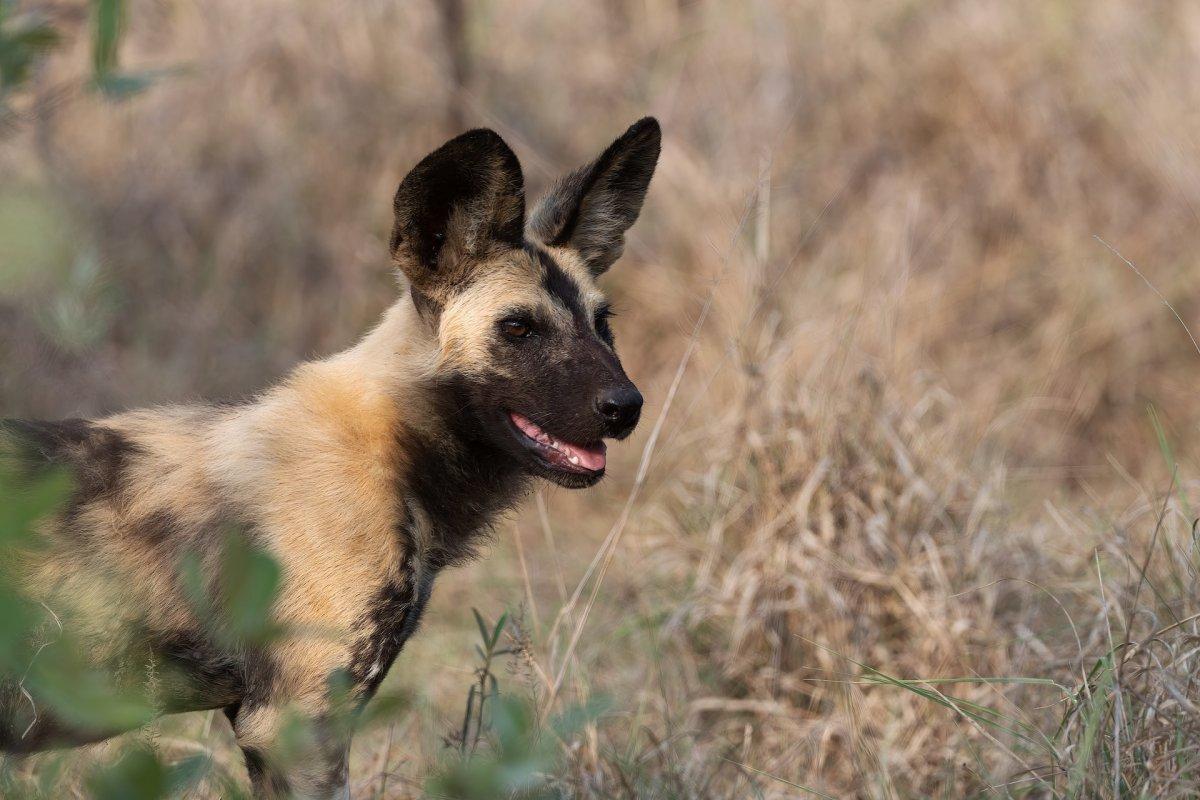
- Name: African wild dog
- Scientific name: Lycaon pictus
- Conservation status:
The African wild dog, also known as the African painted dog or the African hunting dog, is a species of wild canine native to sub-Saharan Africa. It is rarely found in West Africa, but some specimens are occasionally seen in some parts of Mali.
This dog is a pack hunter, specializing in hunting antelopes to exhaustion. It is listed as endangered, mainly due to disease outbreaks, habitat loss, and persecution: now, there are about 1,400 mature individuals left.
2. Violet turaco
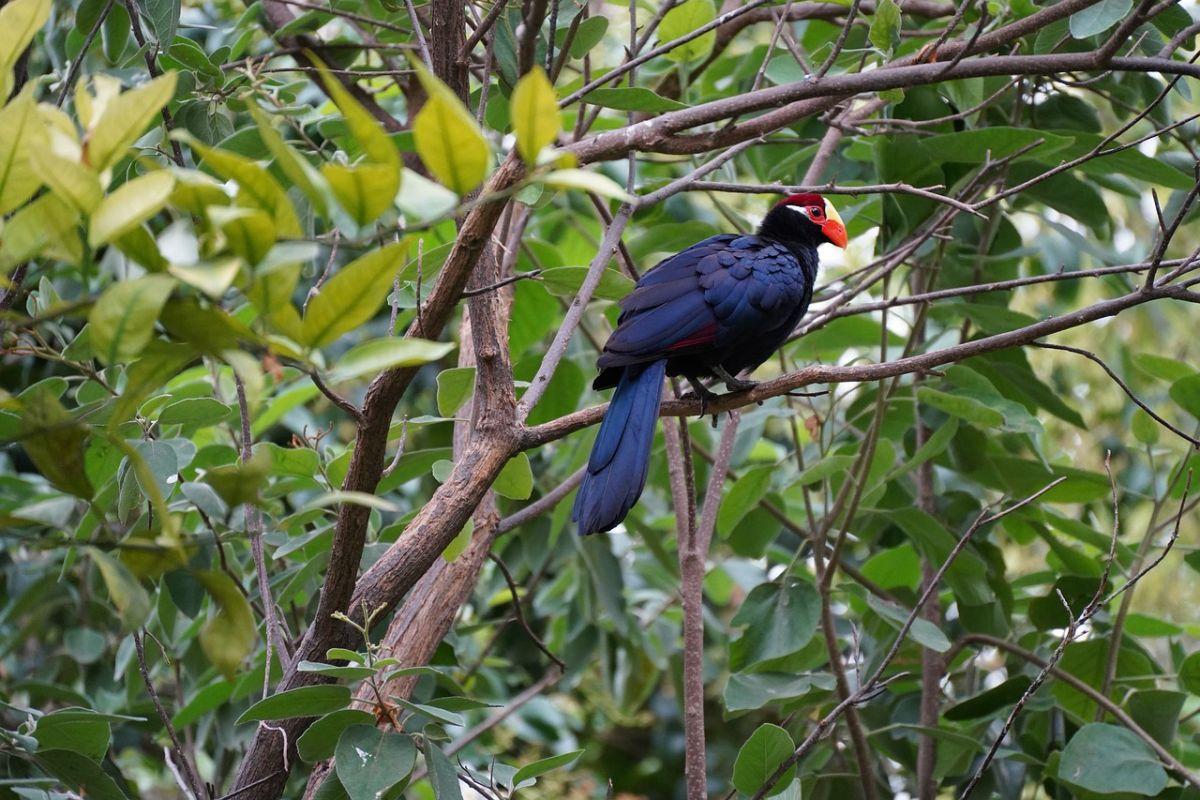
- Name: Violet turaco
- Scientific name: Tauraco violaceus
- Conservation status:
The violet turaco is a large species of turaco native to West Africa. Its range is extremely large, as it lives anywhere from Senegal to Nigeria, with some populations in the Central African Republic and Chad. It inhabits wetlands, savannas, forests, and woodlands.
This bird largely subsists on fruit, but can also eat leaves, flowers, insects, buds, snails, and slugs. It lives in some of Mali’s 17 Important Bird Areas.
3. Addax
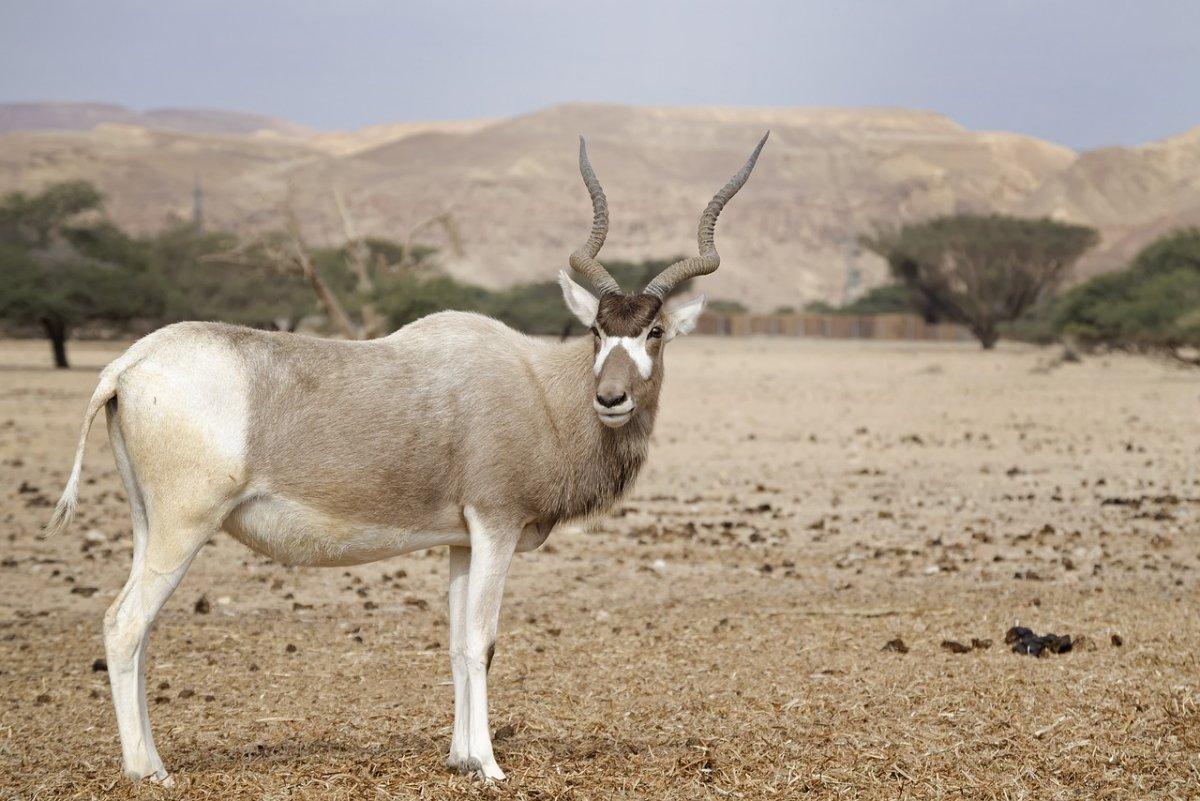
- Name: Addax
- Scientific name: Addax nasomaculatus
- Conservation status:
The addax, also known as the screwhorn antelope or the white antelope, is a species of antelope native to the desert of the Sahara. Its horns are long and twisted, and the color of its coat depends on the season, ranging from grayish-brown to white and sandy blonde.
This mammal is said to live along the Mali/Mauritania border, but it is rarely sighted. Its population started declining at the beginning of the 1800s, and it is now considered critically endangered, mainly due to overhunting, roadkill, firearm introduction, habitat loss, droughts, and agricultural expansion.
4. Dama gazelle
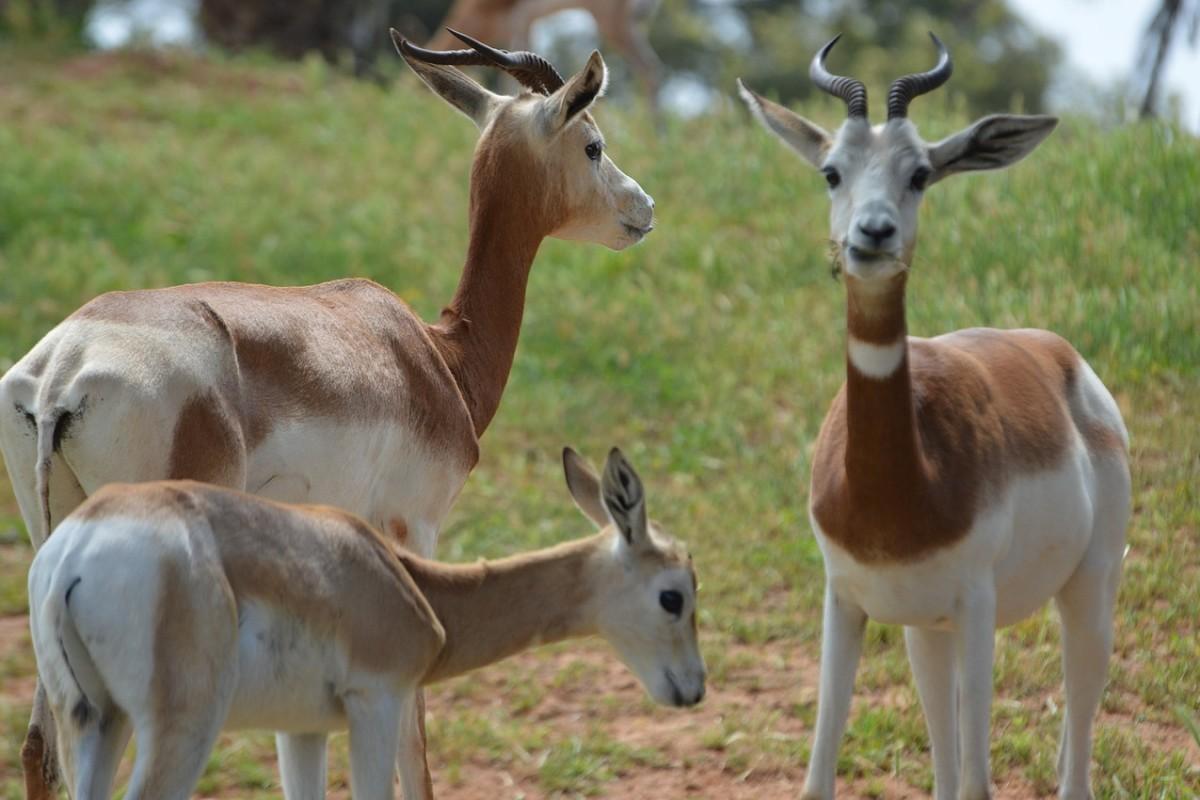
- Name: Dama gazelle
- Scientific name: Nanger dama
- Conservation status:
The dama gazelle, also known as the mhorr gazelle or the addra gazelle, is a species of gazelle native to the deserts of the Sahel and the Sahara. Similarly to the addax, it was hunted to near-extinction, and suffers from habitat loss: now, it is on the brink of extinction.
This gazelle can only be found in Mali, Chad, and Niger, and inhabits shrubland, grassland, open savanna, semi-deserts, and mountain plateaus.
5. African bush elephant
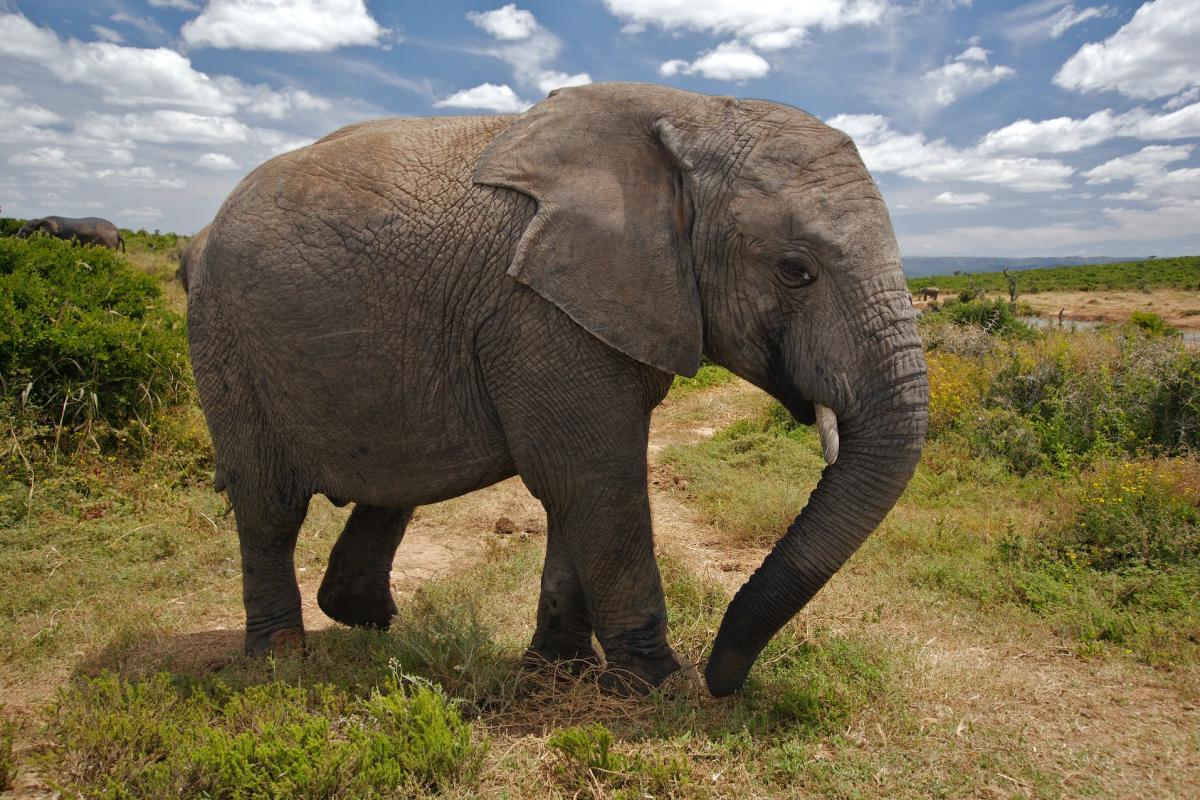
- Name: African bush elephant
- Scientific name: Loxodonta africana
- Conservation status:
The African bush elephant, also known as the African savanna elephant, is definitely one of the most emblematic animals on the African continent. It is one of two African elephants, alongside the African forest elephant, and is known for being the largest terrestrial animal, reaching weights of up to 104 t / 11.5 short tons and heights of up to 3.96 m / 13 ft.
While this elephant usually lives in temperate and subtropical forests, grasslands, wetlands, agricultural land, and woodlands, it can be found in semi-desert and desert regions of Mali and Namibia.
6. Chimpanzee

- Name: Chimpanzee
- Scientific name: Pan troglodytes
- Conservation status:
The chimpanzee, formally known as the common chimpanzee and widely known as the chimp, is a species of great ape native to tropical Africa. It inhabits forests and savannas and is closely related to the bonobo, both of them being humans’ closest living relatives.
Although there are 170,000 to 300,000 chimpanzees in the wild, they are all threatened by habitat loss, disease, and poaching, and are thus on a serious decline and listed as endangered.
7. Great egret
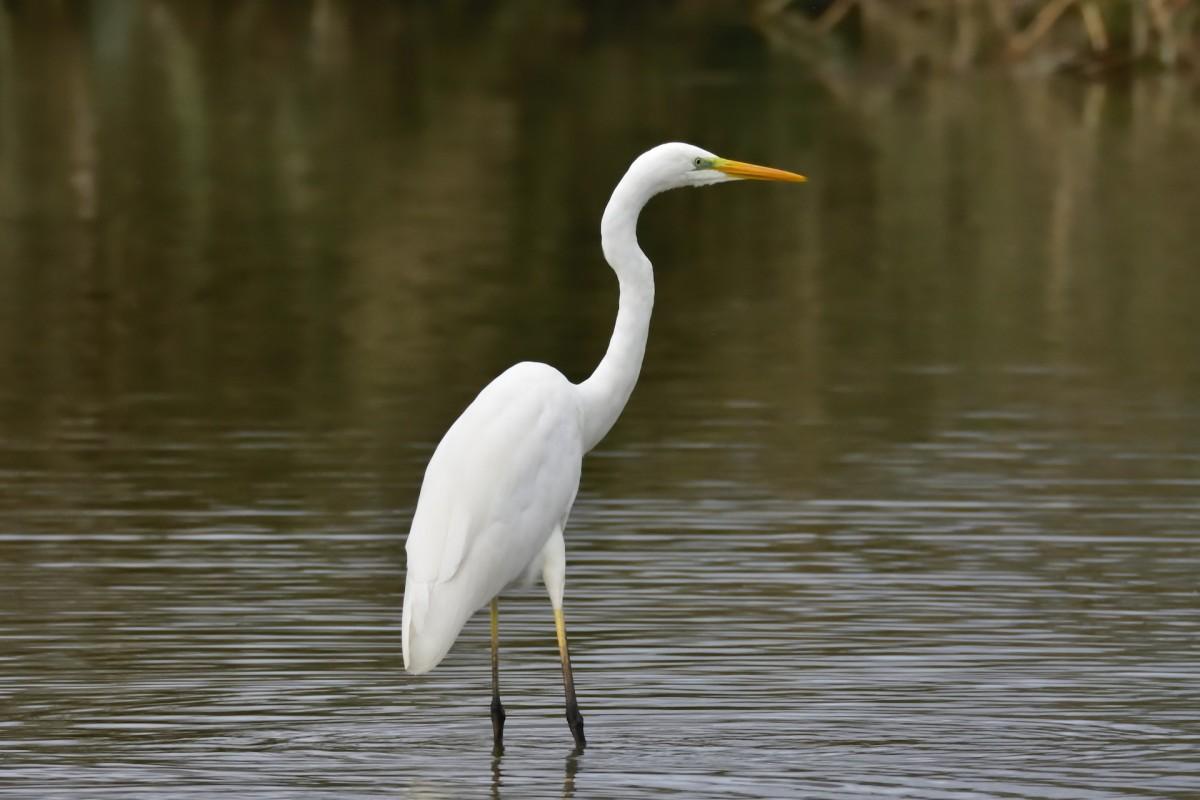
- Name: Great egret
- Scientific name: Ardea alba
- Conservation status:
The great egret, also known as the great white heron, the common egret, the large egret, or the great white egret, is a large species of egret native to Asia, Africa, the Americas, and southern Europe. It inhabits warm temperate and tropical regions of the world and builds tree nests in colonies, usually close to bodies of water.
You will find this bird in the Inner Delta in Mali, one of the world’s most productive wetlands.
8. African fish eagle
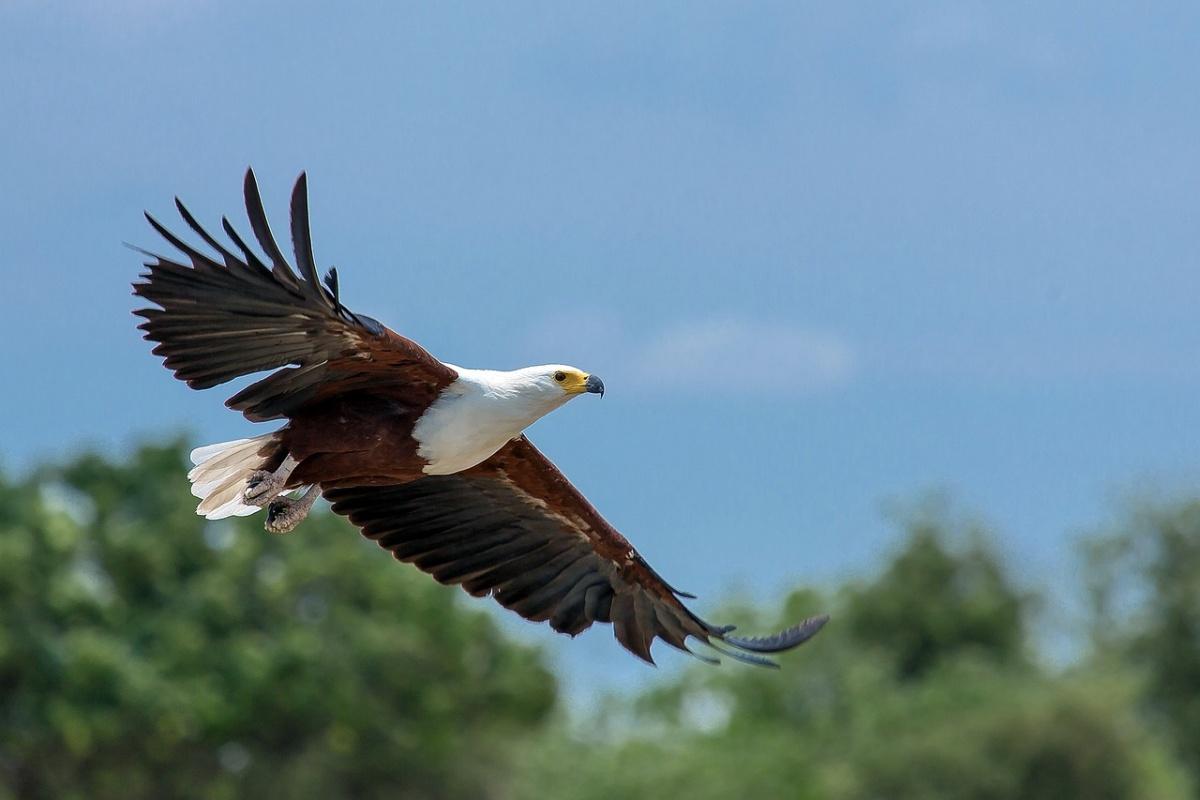
- Name: African fish eagle
- Scientific name: Haliaeetus vocifer
- Conservation status:
The African fish eagle, also known as the African sea eagle, is a large species of bird of prey native to much of sub-Saharan Africa. It is the national bird of Namibia, Zambia, and Zimbabwe, and although there are no seas in Mali, it was reportedly spotted around bodies of water such as deltas and lakes.
This eagle has a very wide range, and, as its name suggests, mainly feeds on fish.
9. Saharan horned viper
- Name: Saharan horned viper
- Scientific name: Cerastes cerastes
- Conservation status:
Be wary if you are in Mali because there are definitely some snakes!
The Saharan horned viper, also known as the desert horned viper, is one of them. It is a venomous species of viper native to the northern African deserts, and some areas of the Levant and the Arabian Peninsula. Its name comes from its characteristic little horns above its eyes, but some hornless individuals also occur.
10. African spurred tortoise
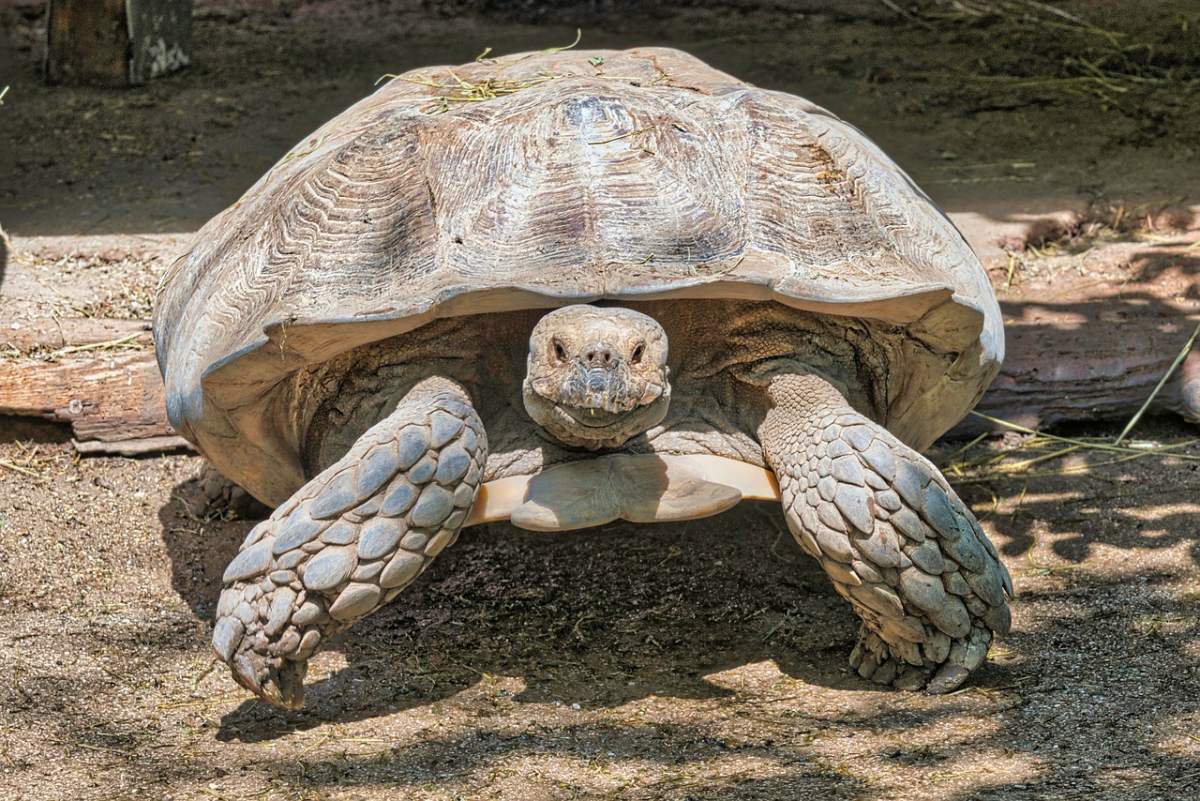
- Name: African spurred tortoise
- Scientific name: Centrochelys sulcata
- Conservation status:
The African spurred tortoise, also known as the sulcata tortoise, is a species of tortoise that lives on the southern edge of the Sahara Desert, and can thus be found in countries such as Mali, Ethiopia, Burkina Faso, Mauritania, Senegal, and Nigeria.
It is the third-largest species of tortoise in the world (after the Aldabra giant tortoise and the Galapagos tortoise), and it is a herbivore that feeds on grasses and plants, as well as cactus pads and flowers.
11. African manatee
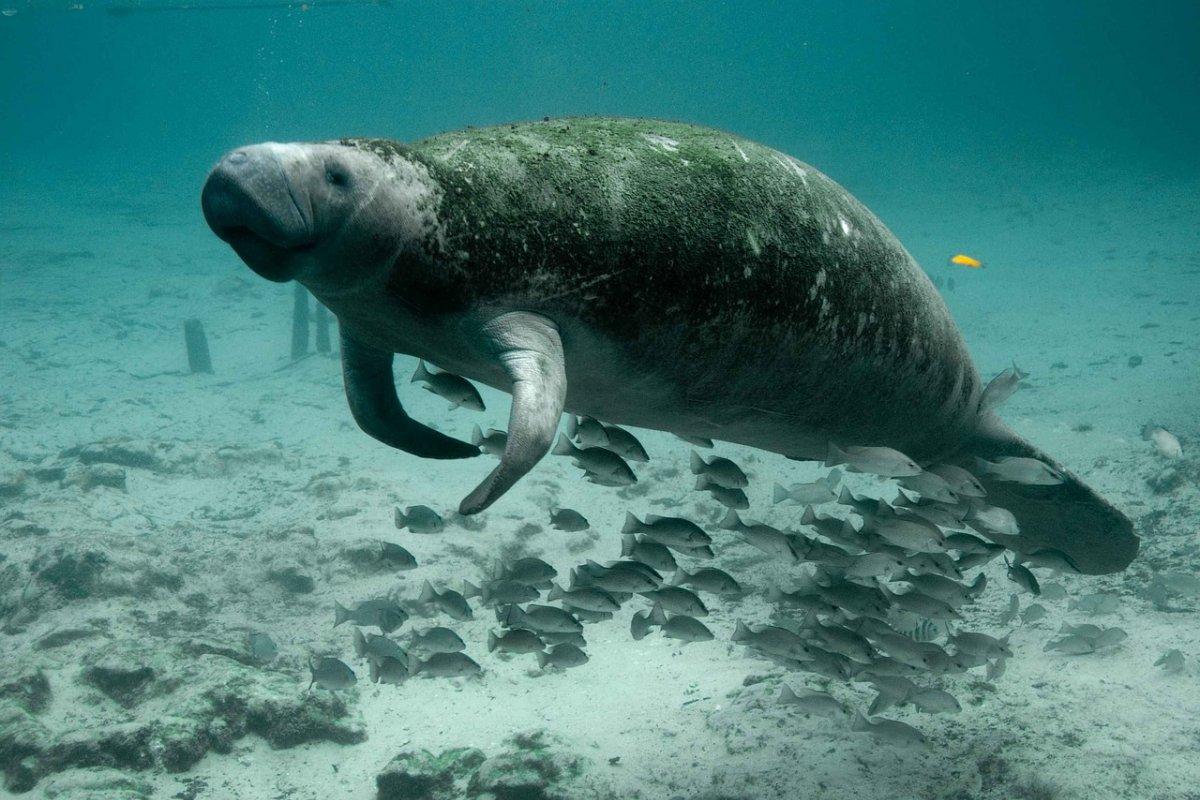
- Name: African manatee
- Scientific name: Trichechus senegalensis
- Conservation status:
The African manatee, also known as the West African manatee, is a large species of manatee native to much of the western areas of Africa, from Senegal in the North to Angola in the South. Although not much is known about this species, it was already spotted as far as 75 km / 47 mi offshore, in Mali!
This aquatic mammal lives in shallow coastal flats and mangrove creeks, as long as they are filled with seagrass. In Mali, it can be found in the Inner Delta.
12. African golden cat
- Name: African golden cat
- Scientific name: Caracal aurata
- Conservation status:
The African golden cat is a species of wild cat endemic to central and western Africa. It inhabits rainforests and is listed as vulnerable to extinction because of habitat loss and bushmeat hunting.
This wild cat is related to the serval and the caracal and is much smaller than them. Its habitats are extremely reclusive, and not much is known about this species, but it mainly hunts for hyraxes, rodents, birds, monkeys, and even small antelopes.
13. Spotted hyena
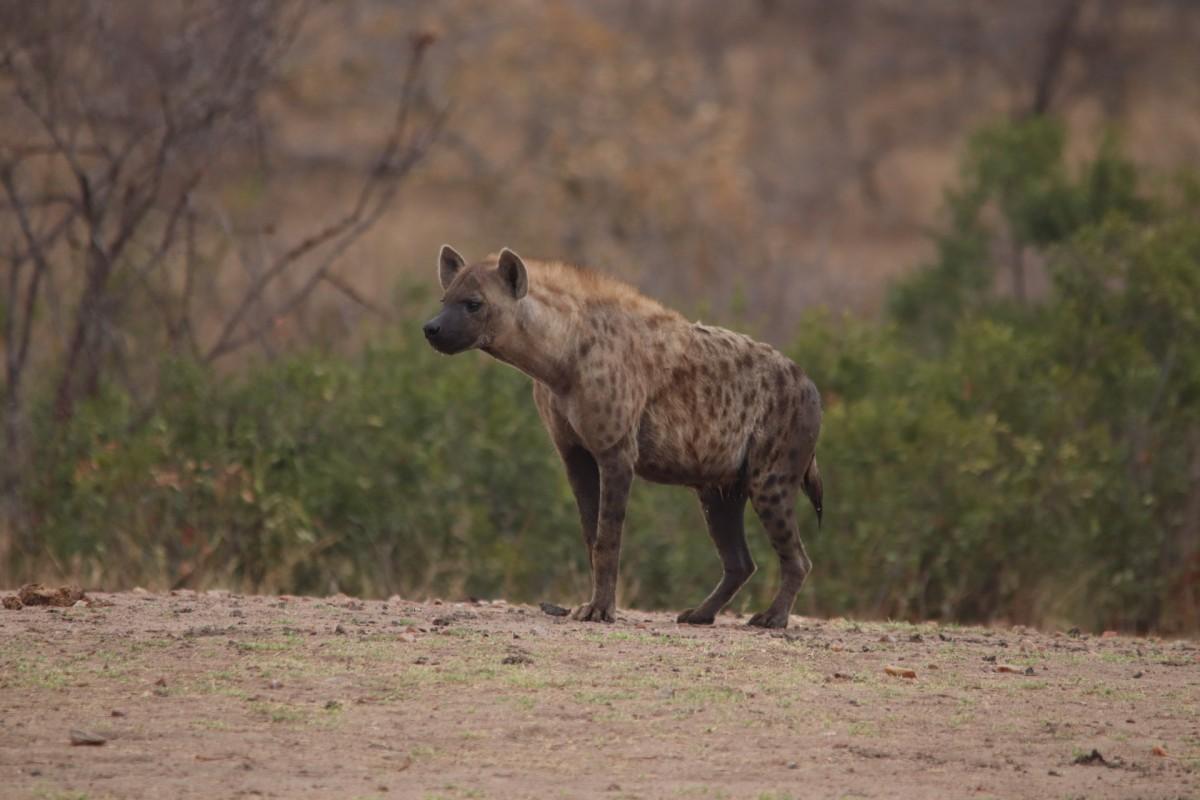
- Name: Spotted hyena
- Scientific name: Crocuta crocuta
- Conservation status:
The spotted hyena, widely known as the laughing hyena, is a large species of carnivore native to much of sub-Saharan Africa. It is one of the most successful species on the continent, being the most common large carnivore; this is due to its high adaptability and opportunism.
In Mali, there are only about 10 to 50 spotted hyenas, and they are all threatened by habitat loss and persecution.
14. Hippopotamus
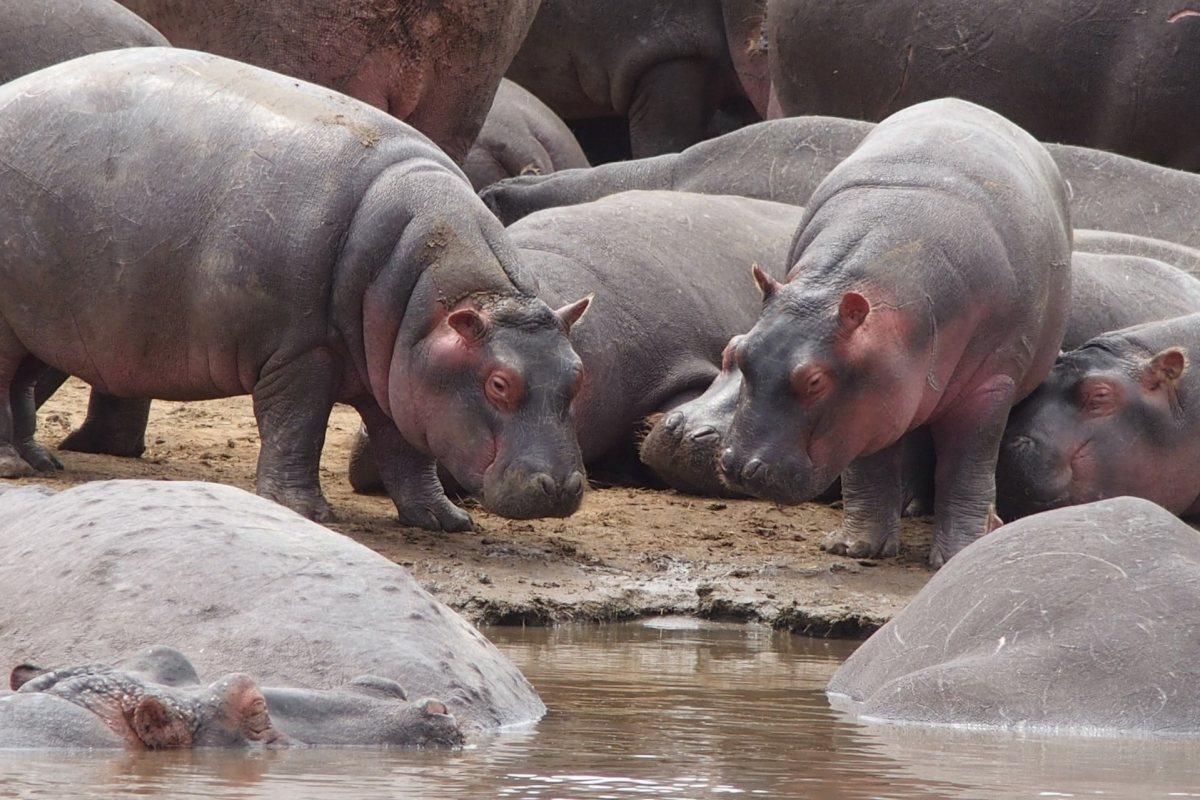
- Name: Hippopotamus
- Scientific name: Hippopotamus amphibius
- Conservation status:
The hippopotamus, also known as the common hippopotamus, the river hippopotamus, or simply the hippo, is a large species of semi-aquatic mammal native to sub-Saharan Africa. While it used to be found almost anywhere from South Africa to the Nile Delta, its range has greatly dwindled over the years, and its populations are much more scattered now.
The hippo can be found in southeastern Mali, in the more fertile regions, with a small population.
15. Red-fronted gazelle
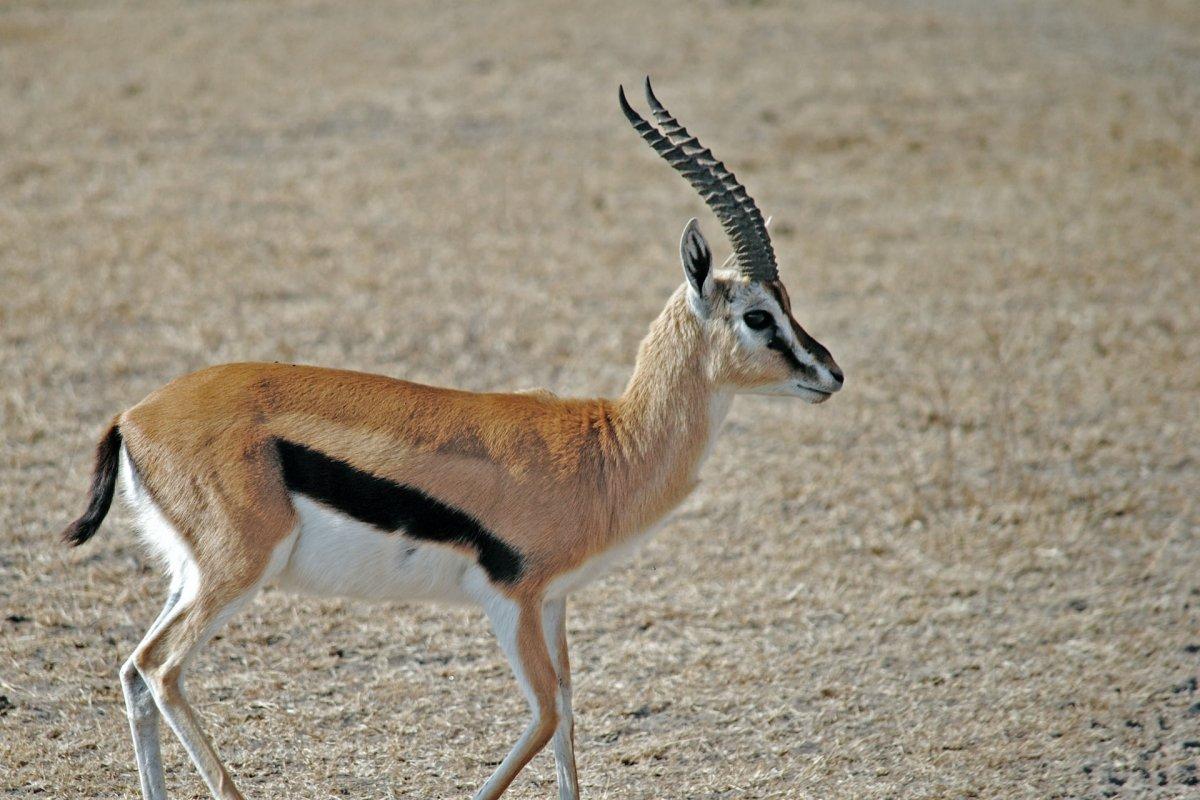
- Name: Red-fronted gazelle
- Scientific name: Eudorcas rufifrons
- Conservation status:
The red-fronted gazelle is a species of antelope native to central and western Africa. While its range is very wide, its distribution is uneven, and it can only be found in a narrow band, crossing the continent from Senegal to the Red Sea.
This gazelle can be found in Mali, Ethiopia, South Sudan, and Eritrea, among other countries, and lives in semi-arid grasslands, savanna woodlands, scrubland, and savannas.
16. Sand cat
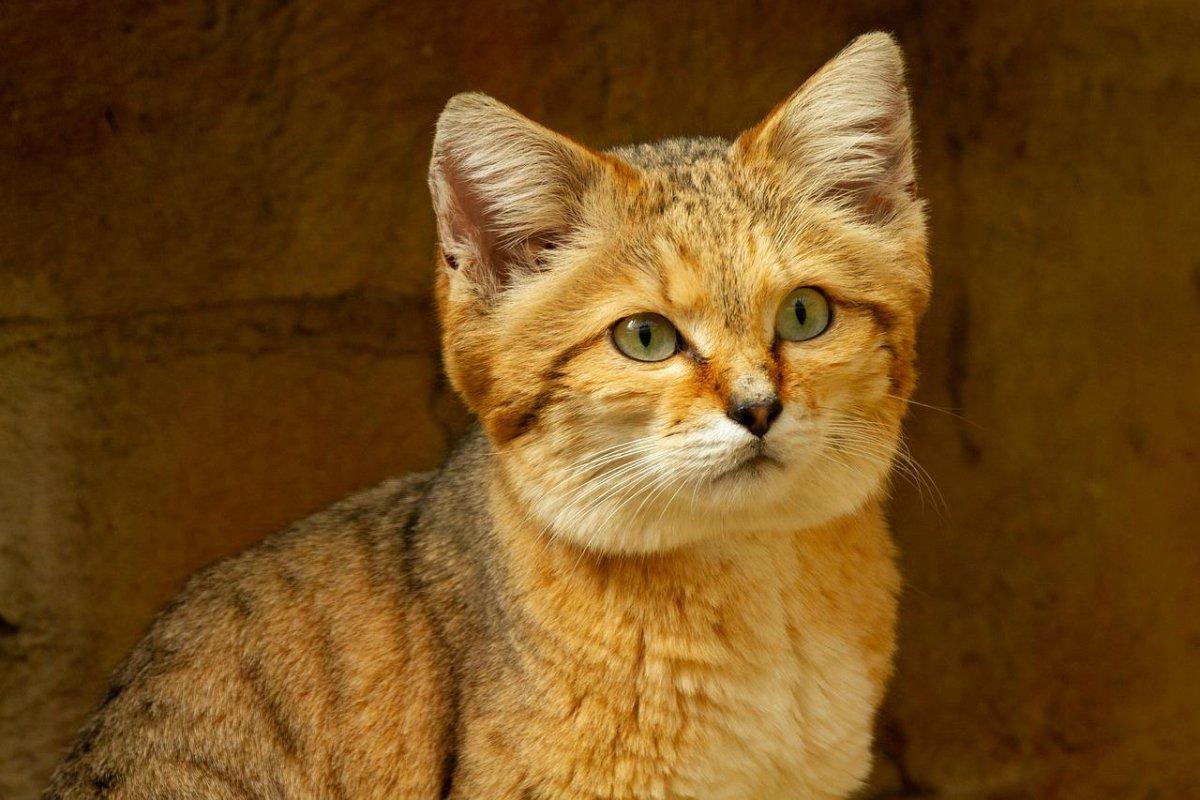
- Name: Sand cat
- Scientific name: Felis margarita
- Conservation status:
The sand cat, also known as the sand dune cat, is a small species of wild cat native to the stony and sandy deserts of northern Africa, the Arabian Peninsula, and western Asia. Thanks to its large numbers and wide distribution, it is considered of least concern.
Believe it or not, despite its small size and inoffensive appearance, this cat is actually specialized in hunting snakes, and can kill venomous ones pretty efficiently!
17. Barbary sheep
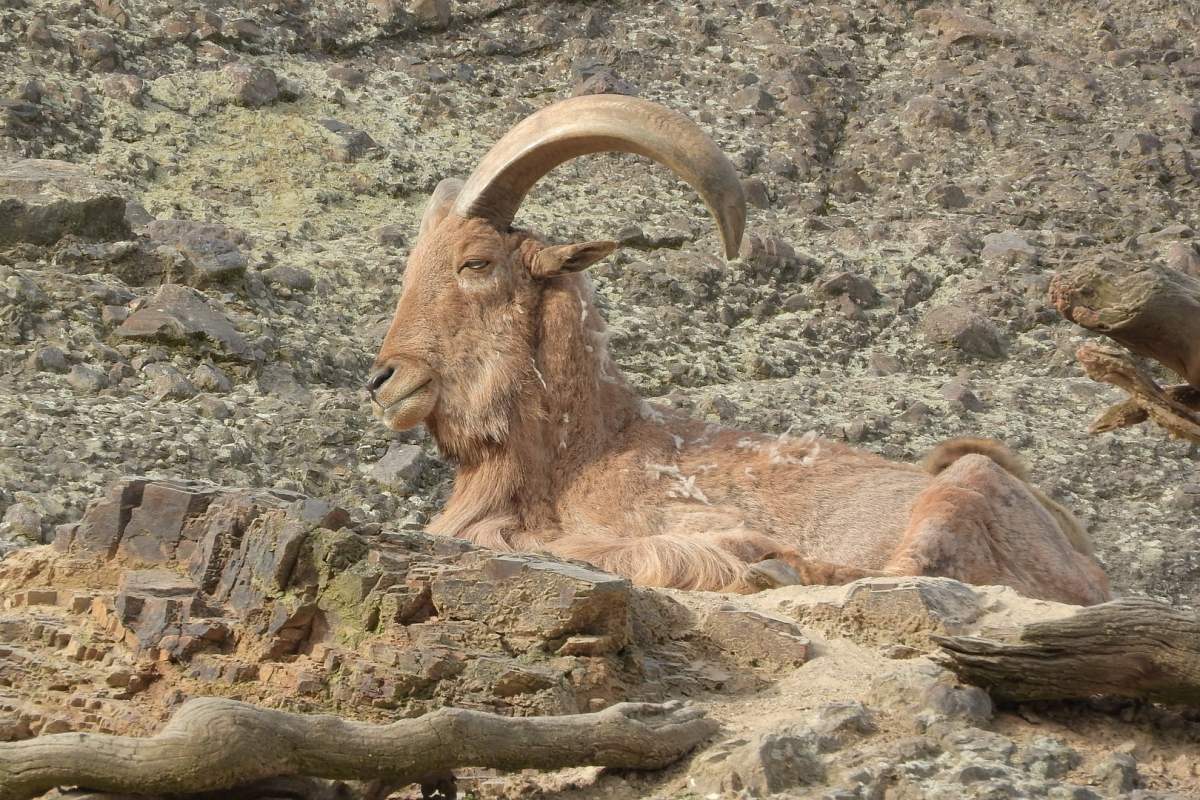
- Name: Barbary sheep
- Scientific name: Ammotragus lervia
- Conservation status:
The Barbary sheep, also known as the moufflon in Mali and other former French territories or the aoudad, is a species of wild goat native to the rocky areas of northern Africa. Within its native range, it is pretty rare, but it has also been introduced to other parts of the world, such as southern Europe and North America.
This sheep can be found in the northern parts of Mali, where it inhabits arid areas and feeds on bushes, lichens, and grasses. It constantly travels throughout the mountains, and its main threats are drought, overgrazing by domestic livestock, and predation by feral dogs and humans.
18. Northwest African cheetah
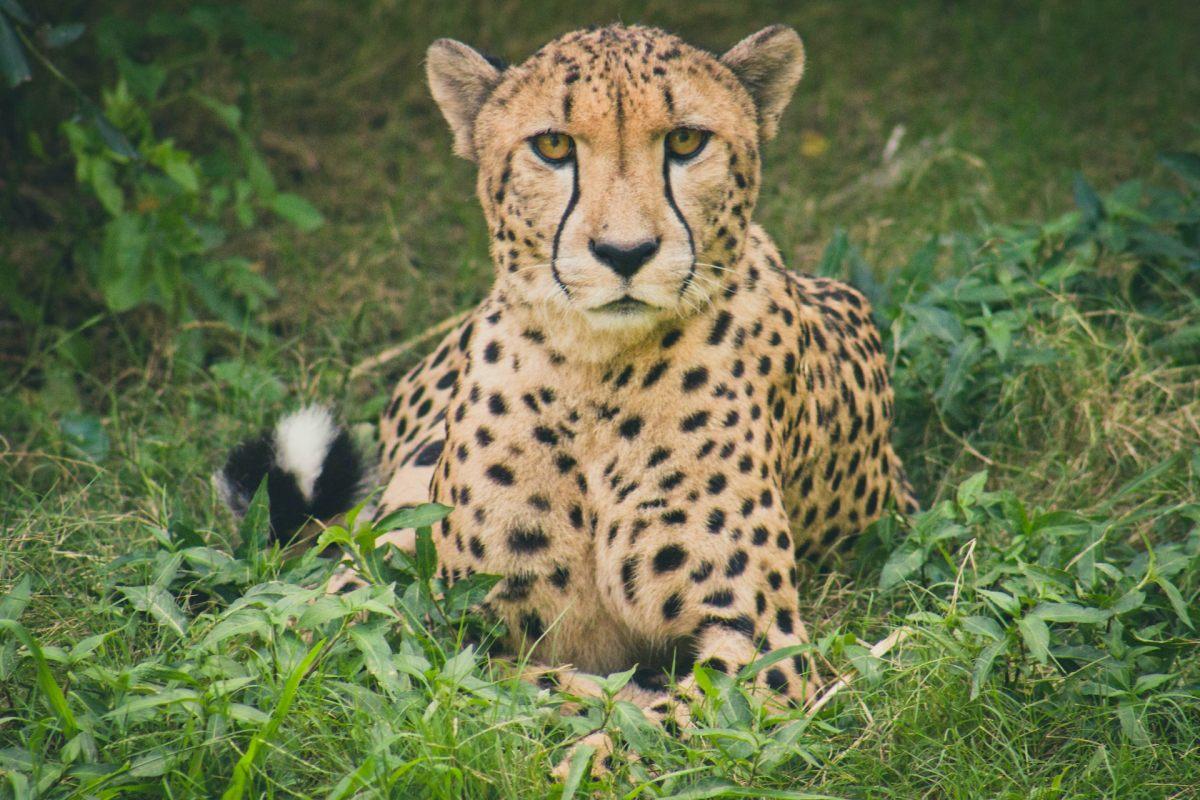
- Name: Northwest African cheetah
- Scientific name: Acinonyx jubatus hecki
- Conservation status:
The Northwest African cheetah, also known as the Saharan cheetah, is a subspecies of cheetah native to the deserts of the Sahel and the Sahara. Its former range used to be much, much wider, encompassing the top-left quadrant of Africa, from Senegal to Libya, but it is now restricted to a much smaller area, including northeastern Mali, southern Algeria, and central Mauritania, among other countries.
There are fewer than 250 mature individuals left in the wild, and the Northwest African cheetah is on the brink of extinction because of habitat loss and poaching.
19. Jones’s roundleaf bat
- Name: Jones’s roundleaf bat
- Scientific name: Hipposideros jonesi
- Conservation status:
Jones’s roundleaf bat is a species of bat endemic to the southern half of western Africa: it can be found in areas such as southern Mali, Burkina Faso, Togo, and Ivory Coast. This bat inhabits dry and moist savanna, tropical and subtropical dry forest, rocky areas, and subterranean habitats such as caves.
This bat is insectivorous and is considered near threatened because of habitat degradation and subsistence hunting.
20. Mali uromastyx
- Name: Mali uromastyx
- Scientific name: Uromastyx (dispar) maliensis
- Conservation status:
The Mali uromastyx is a widely-known species of lizard in Mali. Also known as the dabb lizard, the spiny-tailed lizard, or the mastigure, it is mainly herbivorous, but can occasionally feed on small animals such as other young lizards.
This reptile inhabits hilly, rocky areas that provide good shelter and enough food supply in the form of accessible vegetation. In Mali, some individuals eat insects at specific times of the year, when it is hot and they cannot feed on anything else.
21. Nile perch
- Name: Nile perch
- Scientific name: Lates niloticus
- Conservation status:
Although Mali is a landlocked country, which means it does not have access to an open body of water such as a sea or an ocean, there are still more than 200 species of fish in the country, and they can be found in lakes and rivers.
The Nile perch, locally known as the “capitaine”, is a species of freshwater fish native to the tropical rivers of Africa. It is the most popular fish in Mali, and fishing as a whole is a common practice in the country.
22. Puff adder
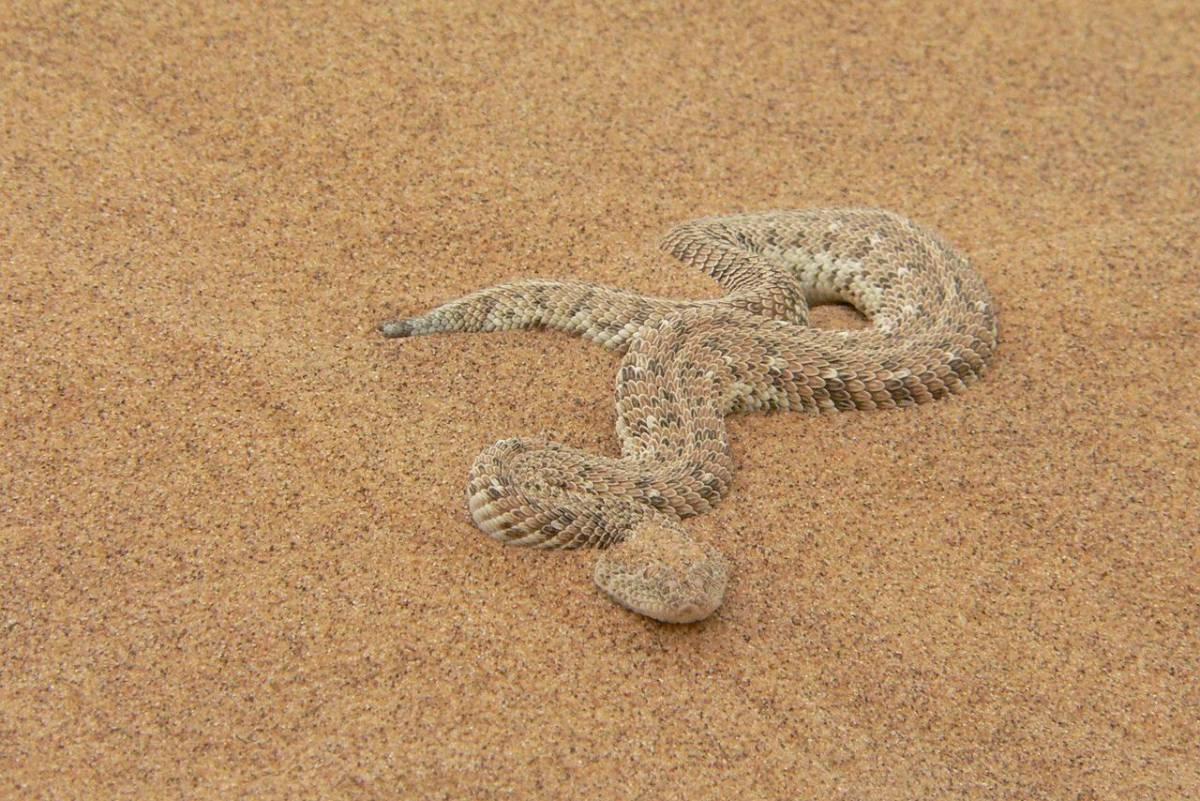
- Name: Puff adder
- Scientific name: Bitis arietans
- Conservation status:
The puff adder is a species of venomous viper native to much of sub-Saharan Africa (except for the tropical regions), as well as Morocco and the southern and southwestern coasts of the Arabian Peninsula.
Alongside the white-bellied carpet viper, it is responsible for most snakebite fatalities not only in Mali but also in all of Africa. Due to its wide distribution, large numbers and size, and potent venom, it is one of the many dangers that Malians have to face.
23. West African slender-snouted crocodile
- Name: West African slender-snouted crocodile
- Scientific name: Mecistops cataphractus
- Conservation status:
The West African slender-snouted crocodile is one of five species of crocodile in Africa. As its name suggests, it has a very long, slender snout, ideal to catch fish, and it is a medium-sized reptile.
This crocodilian inhabits dense, vegetated bodies of water, and is poorly known due to its very small numbers. Over the course of the years, it has been extirpated from many African countries and is on the decline in Mali and other areas.
24. Nile crocodile
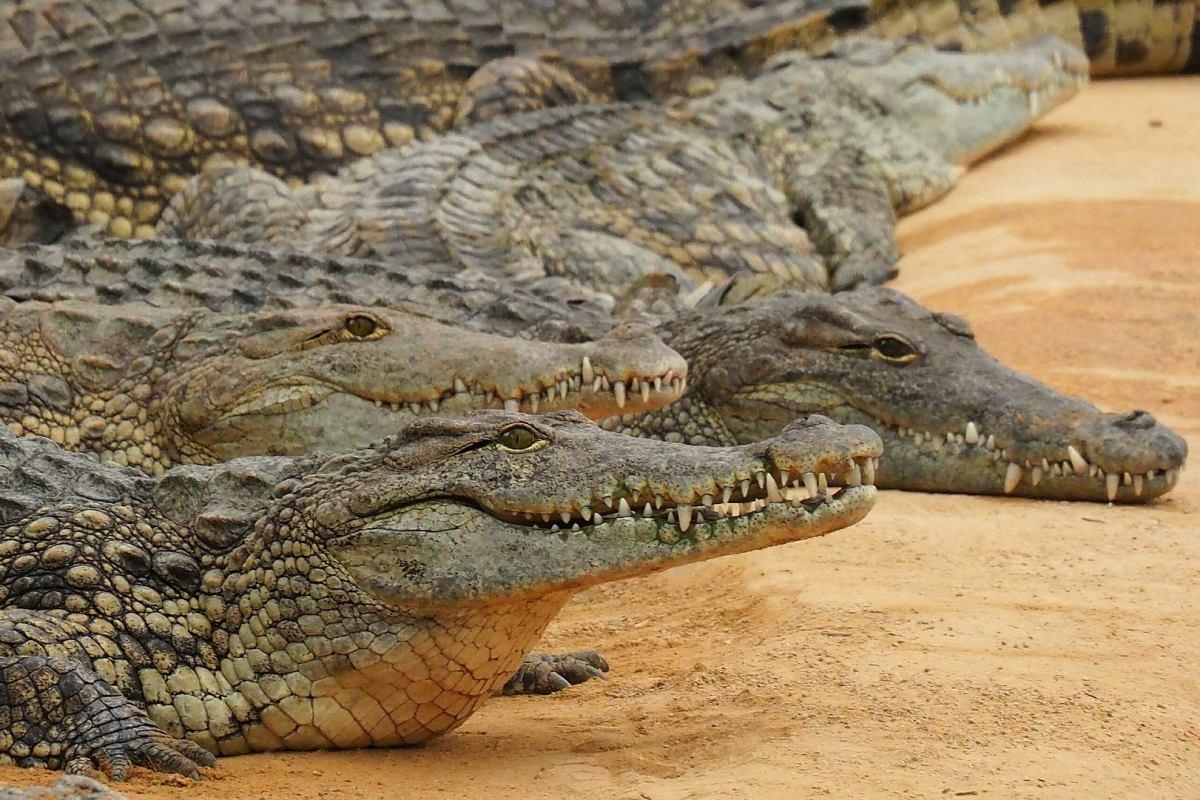
- Name: Nile crocodile
- Scientific name: Crocodylus niloticus
- Conservation status:
The Nile crocodile is one of the most widely known species of crocodile in the world. Despite its name, it does not exclusively live on the Nile River banks, but can actually be found throughout much of sub-Saharan Africa.
In Mali, it is known as the West African crocodile, and is smaller than the average Nile crocodile, reaching lengths of up to 3 m / 9 ft 10 in, compared to 4.4 m / 14 ft 5 in.
—
So there you have them, these were my 25 wild animals in Mali. I hope you enjoyed this list and that you learned something new today.
In case you want to learn more about Mali wildlife, feel free to keep reading, as I still have lots of things to tell you about:
Endangered Animals of Mali
This is definitely the saddest part of the list, but it is very important to raise awareness. Because of this, let’s go through the list of endangered animals in Mali.
Here are the animals in danger of extinction in Mali.
- Scimitar-horned oryx
- Slender-snouted crocodile
- Hooded vulture
- White-backed vulture
- Dama gazelle
- Rüppell’s vulture
- and 1 more…
- African spurred tortoise
- Chimpanzee
- Lappet-faced vulture
- Secretarybird
- Steppe eagle
- and 9 more…
To see the full list of endangered species in Mali, head over to the International Union for Conservation of Nature’s Red List.
What is the National Animal of Mali?
The national animal of Mali is the vulture.
The vulture is an important part of Malian culture, being featured on the nation’s first seal after the Mali Federation was dissolved, more than 60 years ago.
Similarly to the phoenix, it is a symbol of eternity and rebirth and is found on the Malian coat of arms.
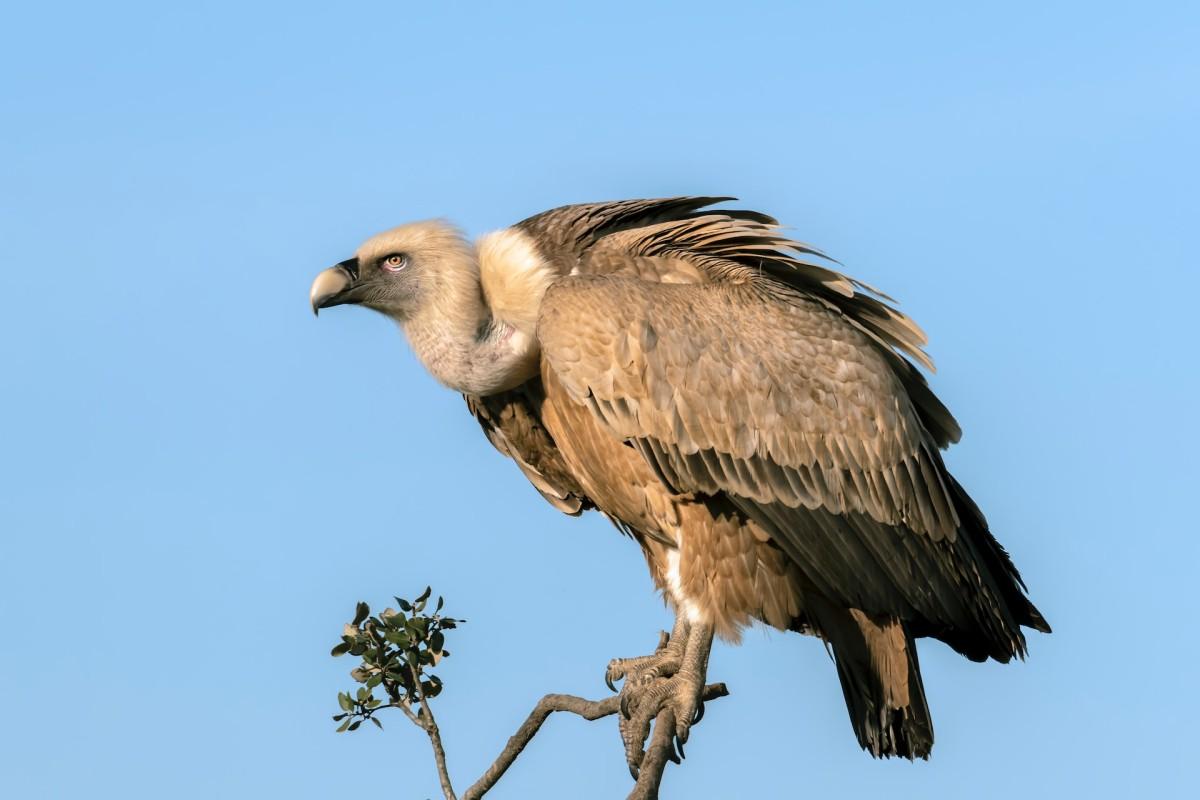
How Many Animals Native to Mali?
What is the diversity of native animals in Mali?
Let’s look at the total number of species of Chordata (mammals, birds, fishes, and reptiles).
Total number of animal species in Mali: 1,069 (14,205 in total in sub-Saharan Africa)
Are there Cheetahs in Mali?
There is one subspecies of the African cheetah that can be found in Mali: the Northwest African cheetah.
Also known as the Saharan cheetah, this large species of wild cat is native to the deserts of the Sahel and the Sahara. Fewer than 250 mature individuals remain in the wild, and this animal is on the brink of extinction.
Are lions in Mali?
Unlike the African cheetah, the king of the jungle used to have a local subspecies in Mali: the West African lion. Now, it has completely disappeared from the country.
And, similarly to the cheetah, this subpopulation that can now be found in Senegal, Nigeria, Burkina Faso, Niger, and Benin, is critically endangered, and fewer than 400 individuals remain. They are all threatened by habitat loss and poaching and have lost 99 percent of their former range.
More About Animals in the World!
Loved these Mali animal facts? Want to see what animals live in other countries?
Then check out these posts:
Or click here to see ALL the facts up on the blog! Spoiler alert: there’s A LOT of them.
Share the knowledge! Click on the buttons below to share information about these famous animals that live in Mali with your friends, and help them learn more about the world 🙂
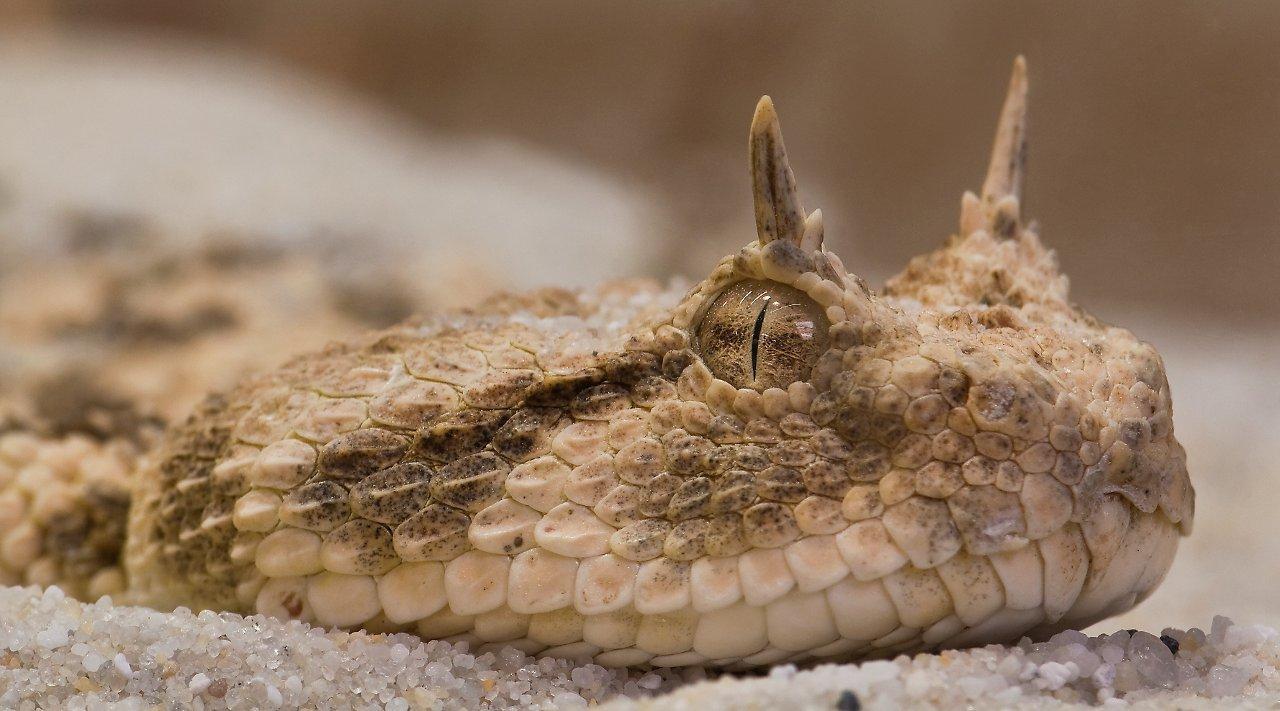
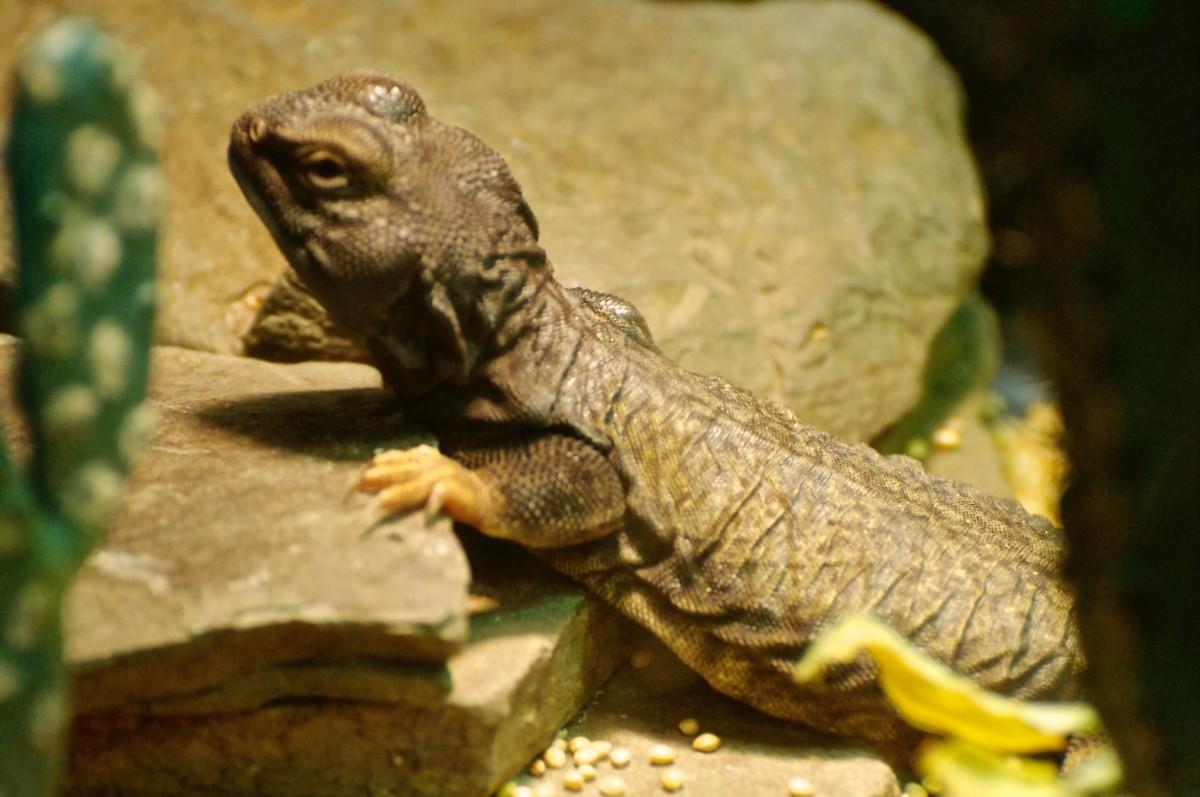
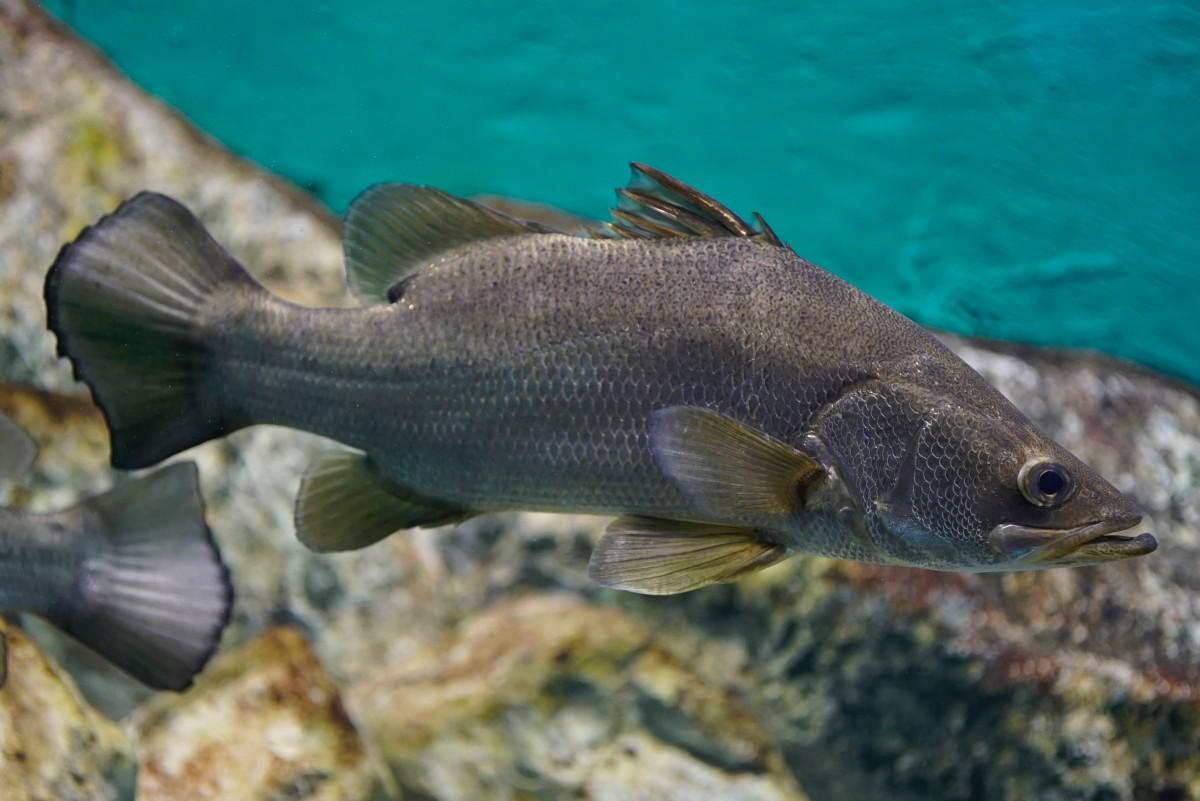
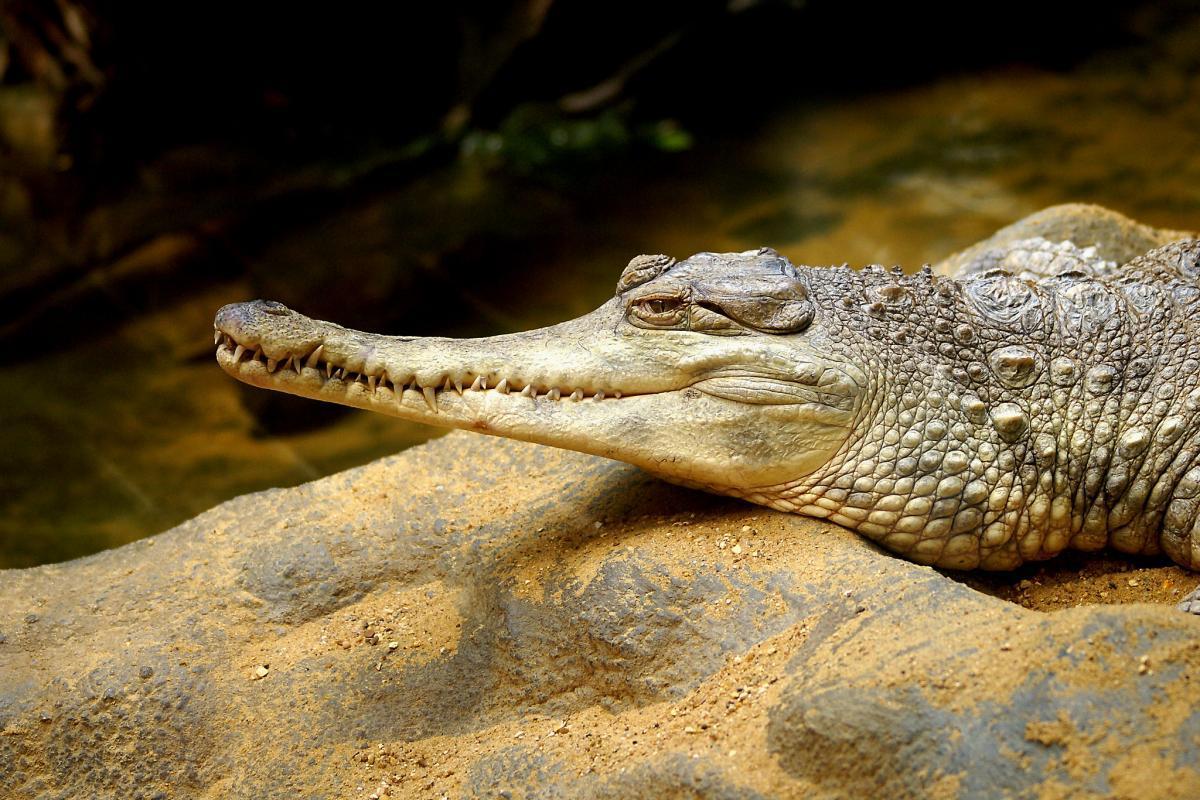

![18 Wild Animals in Maldives [Wildlife in Maldives]](https://www.kevmrc.com/wp-content/uploads/2022/12/18-wild-animals-in-maldives.jpg)
![16 Wild Animals in Romania [Wildlife in Romania]](https://www.kevmrc.com/wp-content/uploads/2022/08/16-wild-animals-in-romania.jpg)
![12 Wild Animals in Kazakhstan [Wildlife in Kazakhstan]](https://www.kevmrc.com/wp-content/uploads/2022/12/12-wild-animals-in-kazakhstan.jpg)